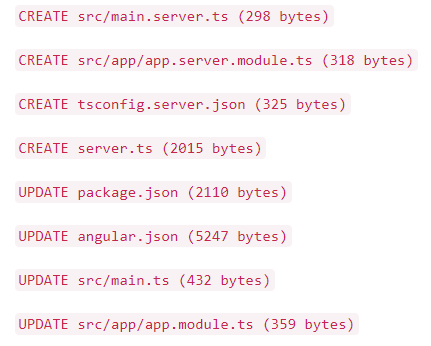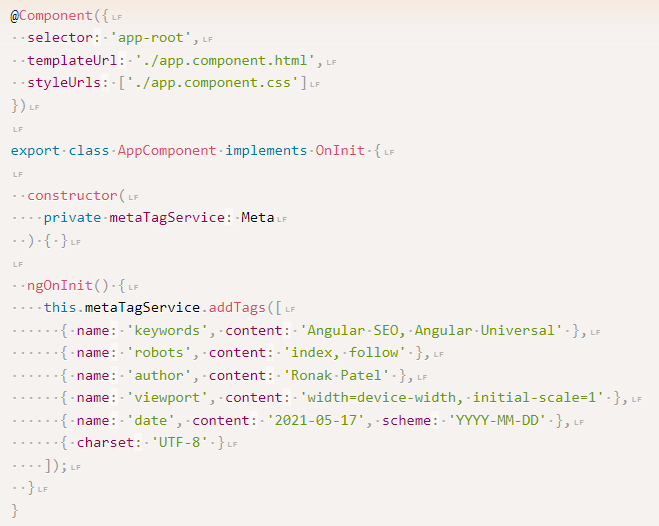Most developers use server-side and client-side JavaScript frameworks for developing applications. However, picking the right framework is often an overwhelming task.
Besides, if you choose the wrong framework, it will impact your project's ability to meet specified guidelines. To meet these guidelines, you need to hire dedicated Angular developers. Angular is one such framework that is fully stacked and used for single-page, hybrid, and web apps.
Additionally, Google maintains and supports the Angular framework. Google bots can process JavaScript, which means a single page Angular index has a chance of ranking high. But to get your app or page indexed, you must configure it and make it SEO friendly.
Why should you make your site SEO friendly?

Source
Search engine crawlers are called bots, spiders, and robots. They browse different pages on the web they visit and add those pages to their search engine index.
- Crawling is vital as it helps search engines learn about your content. Plus, search engines match the user queries they get from different users.
- If the search engine crawlers find your site easily, chances are your website will rank higher.
- Additionally, it will help drive better traffic to your website and increase your chances of conversions. So, it is vital to make your Angular website SEO friendly.
Tips to make your Angular web apps SEO friendly:
1. Angular SEO - Dynamic Rendering

Source
Angular-based apps fetch the data via API calls and do not have too many HTML files for Google to crawl. But you can easily work around the issue by using the dynamic rendering tool that helps you create static HTML files.
- Besides, it helps web crawlers consume and index your web pages. After which, you can configure the web servers to direct the search engine crawlers to pre-render the pages.
- Following this, the users will be redirected to the normal angular websites. By using the tool, you can help index the page and get a higher rank.
2. Setting up the Metadata and titles

Source
Search engine crawlers fetch the data from the metadata of the web app or the titles available.
- For adding the page title dynamically or adding the Metadata, all you need to do is - leverage different angular modules that are available.
- You need to go to the home.components.ts file and update it with command changes.
- Once you use the command changes, you need to reverse the titles on the browser tab.
- The tab changes dynamically as the user navigates through different pages. And if you inspect the code in the browser, you may find the Metadata attached. But the page source content will remain the same.
- If JavaScript is permitted, you can create Metadata and dynamic titles. Additionally, you will have to find the content of a rendered page and send it to users, which is known as pre-rendering.
You can use both the above solutions for SEO, but it may affect the speed. At times you may also face the issue of pre-rendering. So, what will you do in that case? You can solve both the issues with Angular universal.
Angular Universal

Source
Angular Universal is a technology that renders angular applications on the server. Moreover, it allows the server to pre-render your apps when the users visit your site. It can help leverage the power of SEO. Plus, it helps improve the efficiency and accessibility of your web app.
How does it work?
When you use Angular universal, you render the HTML and CSS files shown to the users.
- You can implement this during the server time or the build time when the user requests the page. After which, the user will be served with CSS and HTML files, which enable them to see the content on the website.
- Moreover, with server-side rendering, you can solve the issue of long loading times.
- With a server-side rendered HTML, you can ship a normal client-side application.
- When the client-side app takes over the page, the app will work as a regular single-page application with a run-time rendering feature.
How to use angular universal to make angular websites SEO friendly?
Create a new angular single-page app and use the command,

Now, install angular universal and update your project file. You need to utilize the semantics to add it to your project.

Run the command angular app to create and update the files,

Now, test the command. After performing the above commands, test the app using this command,

Your focus should be on using angular universal as a pre-rendering tool for different purposes.
- As it's a server-side tool, the developers can pre-render applications when the site gets new visitors. Plus, server-side rendering has many SEO benefits for the site.
Tips to lodge meta tags for making angular websites,
- A meta tag is an effective part of the site as it describes the content of the page.
- It appears on both page source and web page of the site.
- Additionally, it acts as a content descriptor, which helps the search engine understand the relevance and the context of the web page.
- When building a website with Angular, you will need to insert meta tags to take up more space than your competitors. But, adding meta tags to Angular can be tricky.
Setting SEO title and the meta tag,

Source
Importing the angular meta-services
The angular meta service allows the angular developers to add keywords, robots, viewports, and encoding.
Importing using the line of code:

When it is complete, place the private meta tag service to the constructor and use the angular meta service to add tags to the following properties:

To Sum up,
Developers take different ways when it comes to executing SEO for angular apps. However, you must analyze and take a look at the prevailing structure and the capability of the web app.
Review all the previous functionalities and replace them with an Angular model. You can update your single-page app with the latest Angular model.
Once you update the applications, make all the essential modifications. It is vital to apply SEO-friendly modifications to the app. Also, you must tally your SEO configurations with enterprise needs.












